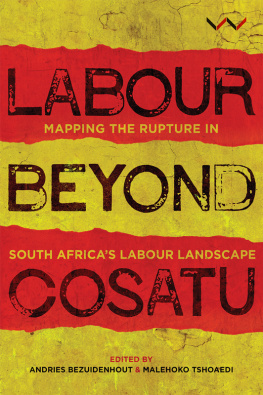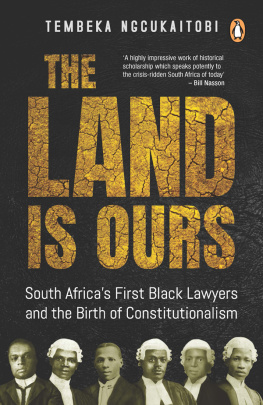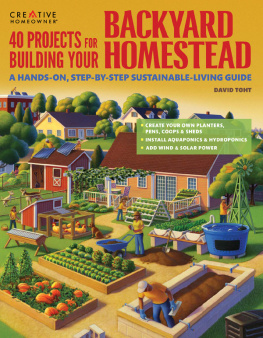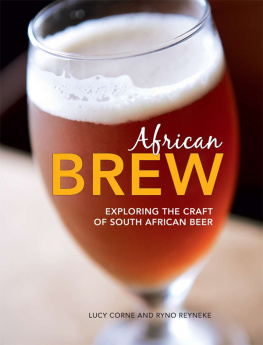
First published 2001 by Ashgate Publishing
Reissued 2018 by Routledge
2 Park Square, Milton Park, Abingdon, Oxon OX 14 4RN
711 Third Avenue, New York, NY 10017, USA
Routledge is an imprint of the Taylor & Francis Group, an informa business
Copyright African Studies Centre Leiden 2001
All rights reserved. No part of this book may be reprinted or reproduced or utilised in any form or by any electronic, mechanical, or other means, now known or hereafter invented, including photocopying and recording, or in any information storage or retrieval system, without permission in writing from the publishers.
Notice:
Product or corporate names may be trademarks or registered trademarks, and are used only for identification and explanation without intent to infringe.
Publisher's Note
The publisher has gone to great lengths to ensure the quality of this reprint but points out that some imperfections in the original copies may be apparent.
Disclaimer
The publisher has made every effort to trace copyright holders and welcomes correspondence from those they have been unable to contact.
Cover photo: A small work party removing weeds and grass from a garden in Shixini (photo: Patrick McAllister)
A Library of Congress record exists under LC control number: 2002391676
ISBN 13: 978-1-138-70362-9 (hbk)
ISBN 13: 978-1-315-20306-5 (ebk)
Contents
Eastern Cape Province, South Africa
Shinixi Administrative Area, Gatyana District
Measured maize yields
Shixini men and women at an umsindleko beer drink, held for a newly returned migrant worker
A small work party clearing weeds from a maize field
Members of work party drinking beer in the maize field in which they have been hoeing to remove weeds
South Africa has generated enormous research interest over the past ten years but its rural areas have attracted less attention. Professor McAllister's work provides striking evidence of the variation and un-evenness of rural livelihood in South Africa, demonstrating that agricultural activities directed at subsistence, notably maize production, continue to thrive in Shixini, and may even agronomically harbour the potential for extended commodity production.
This study builds on research findings emanating from the De-agrari-anization and Rural Employment (DARE) research programme co-ordinated by the African Studies Centre, Leiden, and financed by the Netherlands Ministry of Foreign Affairs. The DARE programme involved four core research teams in Ethiopia, Nigeria, Tanzania and South Africa. Professor McAllister's study was linked to the work of his fellow DARE research team members, Leslie Bank and Wele Manona, based at the Institute of Social and Economic Research at Rhodes University, South Africa.
The DARE programme's research objectives have been to compare and contrast the process of de-agrarianization in various rural areas of Africa in terms of economic activity reorientation, occupational adjustment, social identification, and spatial relocation of rural dwellers away from strictly peasant modes of livelihood. The extent and nature of non-agricultural activities in rural areas have been examined in relation to the influence of risk on rural household production and exchange. As has been amply demonstrated in the case of Shixini, and mirrored in all the other DARE case-study findings, de-agrarianization processes in Africa have in fact reaffirmed rather than undermined the importance of the subsistence fallback, namely, rural dwellers reliance on own-farm produced staple foodstuffs.
The overall findings from the DARE programme are intended to provide insight into the processes of change which are shaping the livelihood prospects of African rural and urban dwellers in the twenty-first century. It is hoped that the knowledge gained may be useful for formulating more effective developmental policies to assist in short-circuiting Sub-Saharan Africa's current economic and political vulnerabilities.
Deborah Fahy Bryceson
DARE Research Programme Coordinator
African Studies Centre, Leiden
This book is an outcome of my involvement duxring the period between 1995 and 1999 in the De-agrarianization and Rural Employment (DARE) research programme co-ordinated from the African Studies Centre in Leiden. I am grateful to Deborah Bryceson and other members of the research team for the opportunity to return to some of the agrarian issues that have interested me for a number of years, although my findings contrast rather markedly with those of the other areas included in the project (see Bryceson 1998). I am also grateful to the African Studies Centre for a Research Fellowship in 1999, which enabled me to start writing up the material on which this volume is based. This material was obtained partly during two short fieldwork periods in 1996 and 1998, during which Mr. Cecil Nonqane of the Albany Museum, Grahamstown, assisted me. But I have drawn also on earlier material collected at various points in my association with the people of Shixini in the Gatyana (Willowvale) district of South Africa's Eastern Cape Province, in what was the Transkei homeland, which commenced in 1976, and on which many of my colleagues have commented from time to time. I would like to mention, in particular, those with whom I worked in the Department of Anthropology at Rhodes University, Grahamstown, during the period 1981-1990, Chris de Wet, Robin Palmer and Michael Whisson. I have also drawn on data collected in Shixini by two post-graduate students, Maura Andrew and Gavin Heron, who completed Master of Arts dissertations in 1990 and 1992, on land use patterns and co-operative work, respectively. I am grateful to Ben Cousins for assistance in identifying material relevant to the policy and development implications of the findings presented below. In Shixini itself my hosts, Nothusile Tshemese, her late husband, Mzilikazi, as well as their kin and neighbours, have for long been unfailingly helpful, generous and tolerant of my intrusions.
During my association with the people of Shixini my approach has been the conventional anthropological one of participant-observation and informal interview, though from time to time I have conducted household censuses or surveys of various kinds. My visits to Shixini have concentrated on the three southeastern and adjacent sub-wards of Nompha, Ndlelibanzi and Folokhwe, though it is in the nature of this kind of field-work for data to be drawn from many people and events outside of these three areas as well as from those within them. For the purposes of the DARE study a basic census was done in 1998 of all the 194 homesteads in these three sub-wards to provide information that could be compared with census-type surveys done in 1990 (in the same three sub-wards) and inl976 (in Folokhwe sub-ward). I am grateful to a Folokhwe resident and friend, Masilingane Mhlakaza, who ably assisted me with the 1998 census. In what follows, some reference is made to findings derived from census figures, but most of the data is of a qualitative rather than a quantitative kind
Finally, I want to express my gratitude to Mieke Zwart (African Studies Centre) who took care of the layout work, and to Nel de Vink who drew the maps.
______________________
Transkei was formerly one of the nominally independent homelands established in terms of apartheid ideology. It is now part of the Eastern Cape Province, but as a distinct part of the Eastern Cape is still often referred to by its older name, or by the more tedious former Transkei, which I avoid. English and Xhosa names for districts have co-existed for many years, with the Xhosa names now enjoying official status. In this book I refer to the district as Gatyana and the town within it as Willowvale town.









